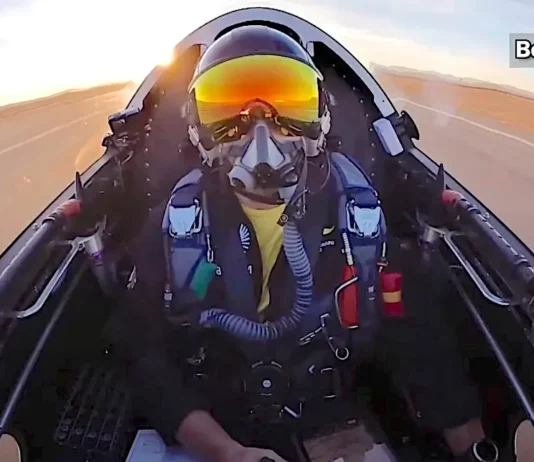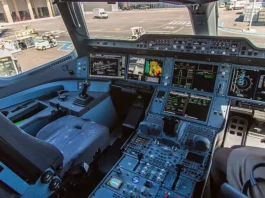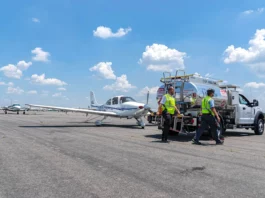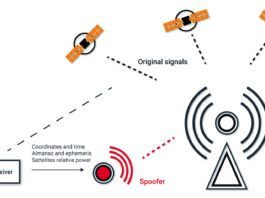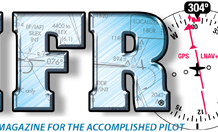Briefing: September 2020
PILOT DATABASE EXPANSION OPPOSED
NBAA is fighting a proposed FAA pilot record database that will require airlines and so-called “gateway operators” to keep files on...
Briefing: August 2020
FLIGHT DIRECTOR “CONFLICT” LED TO CRASH
The struggle to find balance between pilot input and autonomous control of aircraft added another chapter with the revelation...
Briefing: July 2020
AIRVENTURE 2021 ALSO IN QUESTION
To no one’s surprise, EAA cancelled this year’s AirVenture and there’s no guarantee the big show will go ahead in...
Briefing: June 2020
PAX GRABBED BAGS DURING EVACUATION
A video distributed by Russian government investigators showed passengers escaping a burning Aeroflot Superjet 100 leaving the aircraft with carry-on...
Briefing: May 2020
206 DOOR AD MAY BE COMING
A longstanding design issue with the Cessna 206 might end up resulting in an AD after it was implicated...
Briefing: April 2020
BRYANT CRASH RAISES HELICOPTER EQUIPAGE QUESTIONS
Crashes that kill celebrities tend to be a catalyst for safety changes in aviation and the tragic crash of...
Briefing: March 2020
Fuel Dump Raises Questions
The FAA says it will “thoroughly investigate” the circumstances of an emergency landing by a Delta 777 at LAX that involved...
Briefing: February 2020
Harbour Air flew a De Havilland Beaver on floats on pure electric power for the first time in early December as the first step in its program to fully electrify its fleet of historic seaplanes. The Vancouver-based airline serves dozens of communities off British Columbia's west coast and most of its flights are 30 minutes or less so the company believes new advances in battery technology will enable it to safely carry out the dozens of commercial passenger flights it operates every day. The December flight was a demonstration of the motor in a plane near its gross weight with batteries and lasted about 15 minutes. CEO Greg McDougall lifted the almost-70-year-old airframe off the Fraser River and later reported that it flew like a Beaver. He said newer, lighter batteries that are becoming available will allow room for passengers and cargo and the savings on maintenance and downtime will ultimately pay off.
Briefing: January 2020
The final report on the first of two catastrophic crashes that led to the grounding of the Boeing 737 MAX was released by Indonesias air safety board in late October and it painted a damning picture of missteps at every stage leading up to the downing of Lion Air 610 in the Java Sea. From poor basic design, to pilot error and faulty design, the report listed at least nine causal factors for the crash, which killed all 189 people on board. From what we know, there are nine things that contributed to this accident, Indonesian air accident investigator Nurcahyo Utomo said in a news conference announcing the reports findings. If one of the nine hadnt occurred, maybe the accident wouldnt have occurred, he added. One of those factors was the fact that the pilots didnt react the way Boeing designers predicted pilots would respond to emergencies such as the faulty angle of attack data triggering the Maneuvering Characteristics Augmentation System (MCAS) into thwarting their attempts to keep the aircraft from diving into the ocean.
Briefing: December 2019
FlightAware and FlightBridge are teaming up to organize private aircraft travel from doorstep to doorstep with predictability and accuracy. At the recent NBAA-BACE convention in Las Vegas, the two companies announced an integration of their two systems that will let business and private travelers plan their journeys down to the last detail while harnessing machine learning to ensure they go as smoothly as possible.
Briefing: November 2019
Redbird closed its Skyport FBO at San Marcos Regional Airport in Texas citing poor financial performance. In its eight years of operation, the Skyport has never made a dime. Not even a profitable quarter, Redbird founder Jerry Gregoire wrote in a blog post. Had it not been for Redbird Flight Simulators explosive growth and profitability over those years, the Skyport might have found itself in deep trouble very early on. Gregoire said the company miscalculated some fundamentals in building the FBO in 2011, including its location. It was, however, well received by users. It won ACE and STAR awards for best FBO at an airport with less than 4000 annual arrivals in 2018. Employees were offered jobs with the simulator company.
Briefing: October 2019
The Air Force and tech company DZYNE have created an ungainly-looking device that can take off, fly and land an airplane like a human pilot and without tearing the aircraft apart. The Air Force Research Lab (AFRL) Center for Rapid Innovation flew a Cessna 206 with the ROBOpilot at the controls for two hours on Aug. 9 and said the idea is to make the machine interchangeable with human pilots. Imagine being able to rapidly and affordably convert a general aviation aircraft, like a Cessna or Piper, into an unmanned aerial vehicle, having it fly a mission autonomously, and then returning it back to its original manned configuration, said Dr. Alok Das, senior scientist with the Center for Rapid Innovation, in a statement. A video with the news release shows the robotic pilot making corrections to keep the centerline during takeoff and a bounced, but ultimately safe landing.

